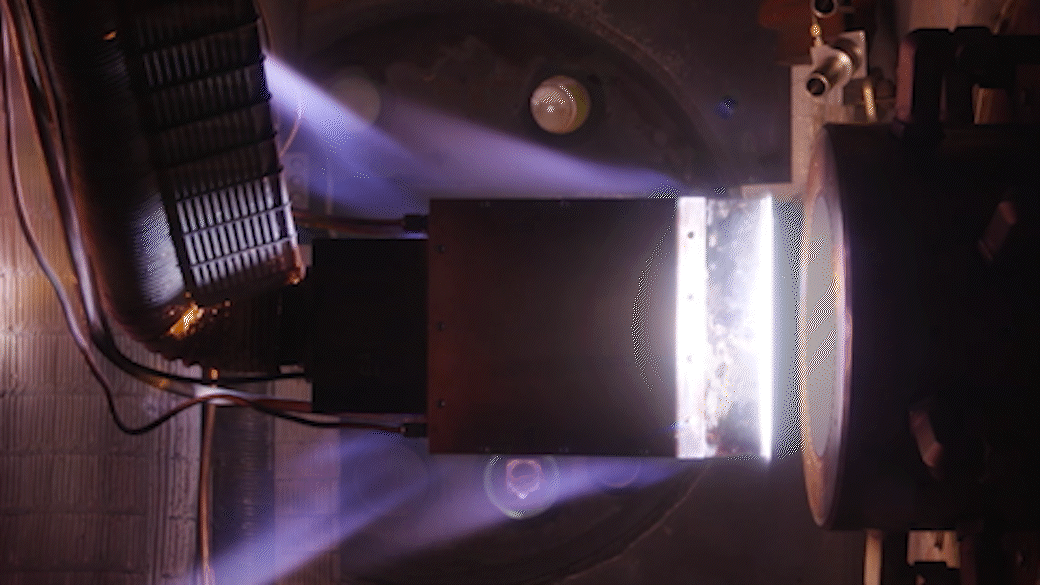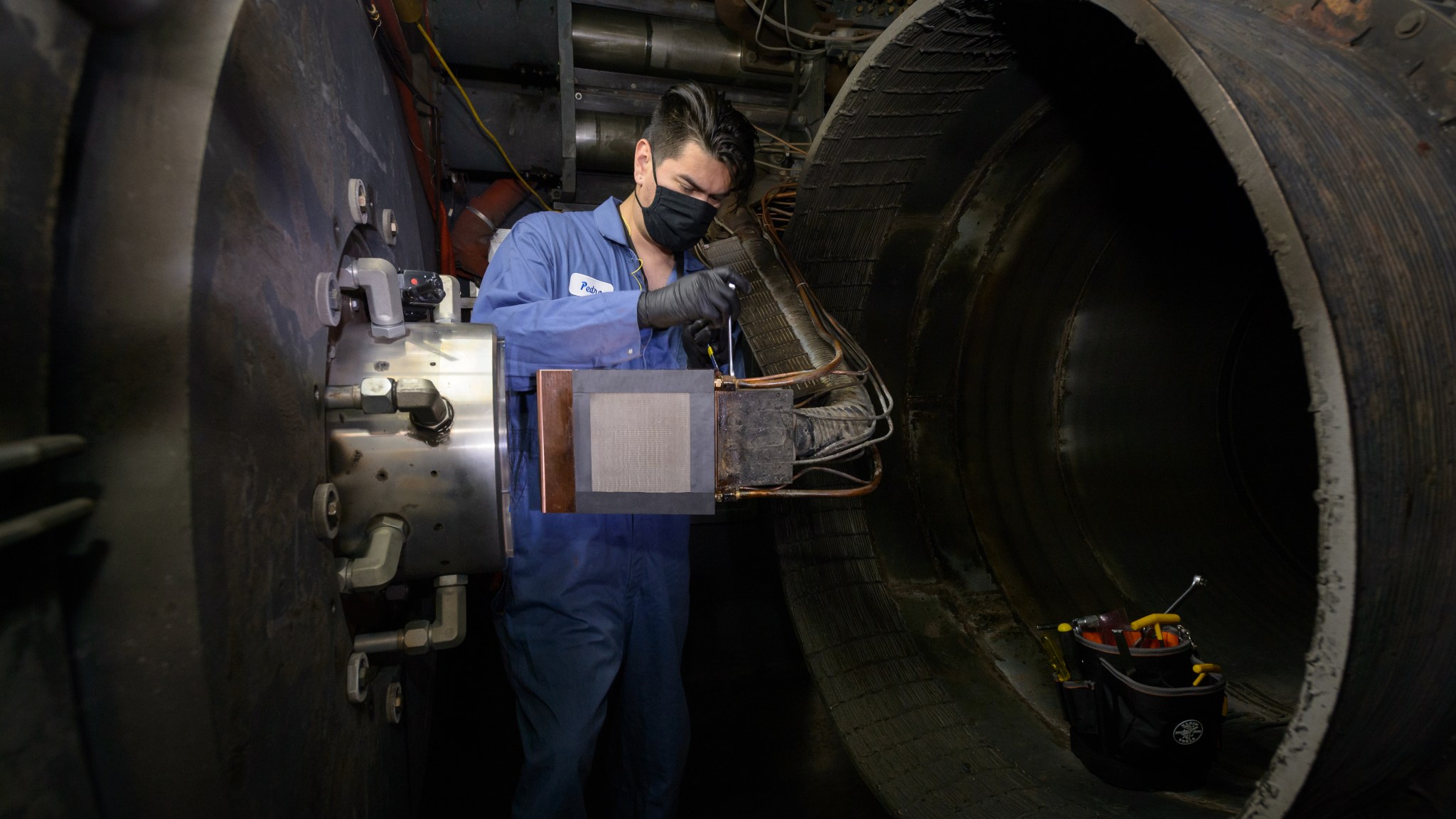

When NASA astronauts return from the Moon during the Artemis missions, their spacecraft will blast through Earth’s atmosphere at more than 25,000 miles per hour. At that screaming-fast speed, the Orion crew capsule will trigger two forms of heating – convective and radiant – that its heat shield must contend with to protect the spacecraft and crew. For the first time, Orion’s heat shield material was simultaneously tested with both kinds of heating at NASA’s Ames Research Center in California’s Silicon Valley. The April 2021 series of tests confirmed that Orion’s heat shield system performs as expected when exposed to the combined heating and certified it for the Artemis lunar missions.
When the convective and radiant heating are combined, they affect the heat shield differently than either does alone. Teams at Ames developed a way to simulate both at once in the arc jet facility, where extremely hot and fast-moving gases flow over a test object to approximate the heating a spacecraft experiences when entering the atmosphere. Researchers added a powerful laser heat source, which simulates radiant heating, to the convective heaters already in use. With both types of heating in play, the Ames tests of the spacecraft’s entry were the most realistic yet.
The team first examined the material making up the bulk of Orion’s heat shield, called Avcoat. They then focused on the material used at locations on the heat shield where the Orion crew module and service module connect. The second material, pictured in tests here, is a new material invented at Ames, the 3-Dimensional Multifunctional Ablative Thermal Protection System, or 3DMAT. It combines the ability to withstand the heating of atmospheric entry with extremely high strength, and will fly for the first time as part of the upcoming uncrewed Artemis I flight test.
Author: Abby Tabor, NASA’s Ames Research Center
For news media:
Members of the news media interested in covering this topic should reach out to the NASA Ames newsroom.



























